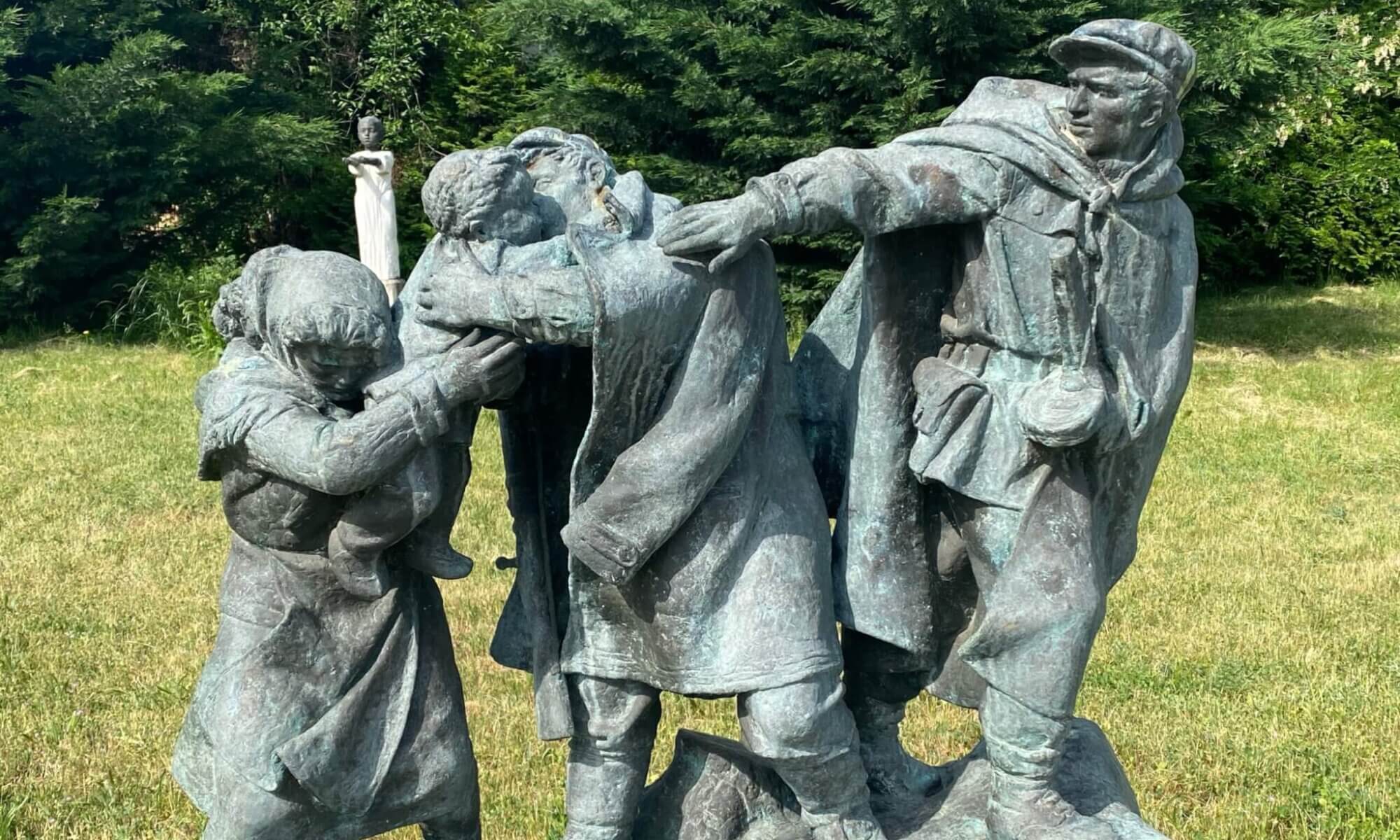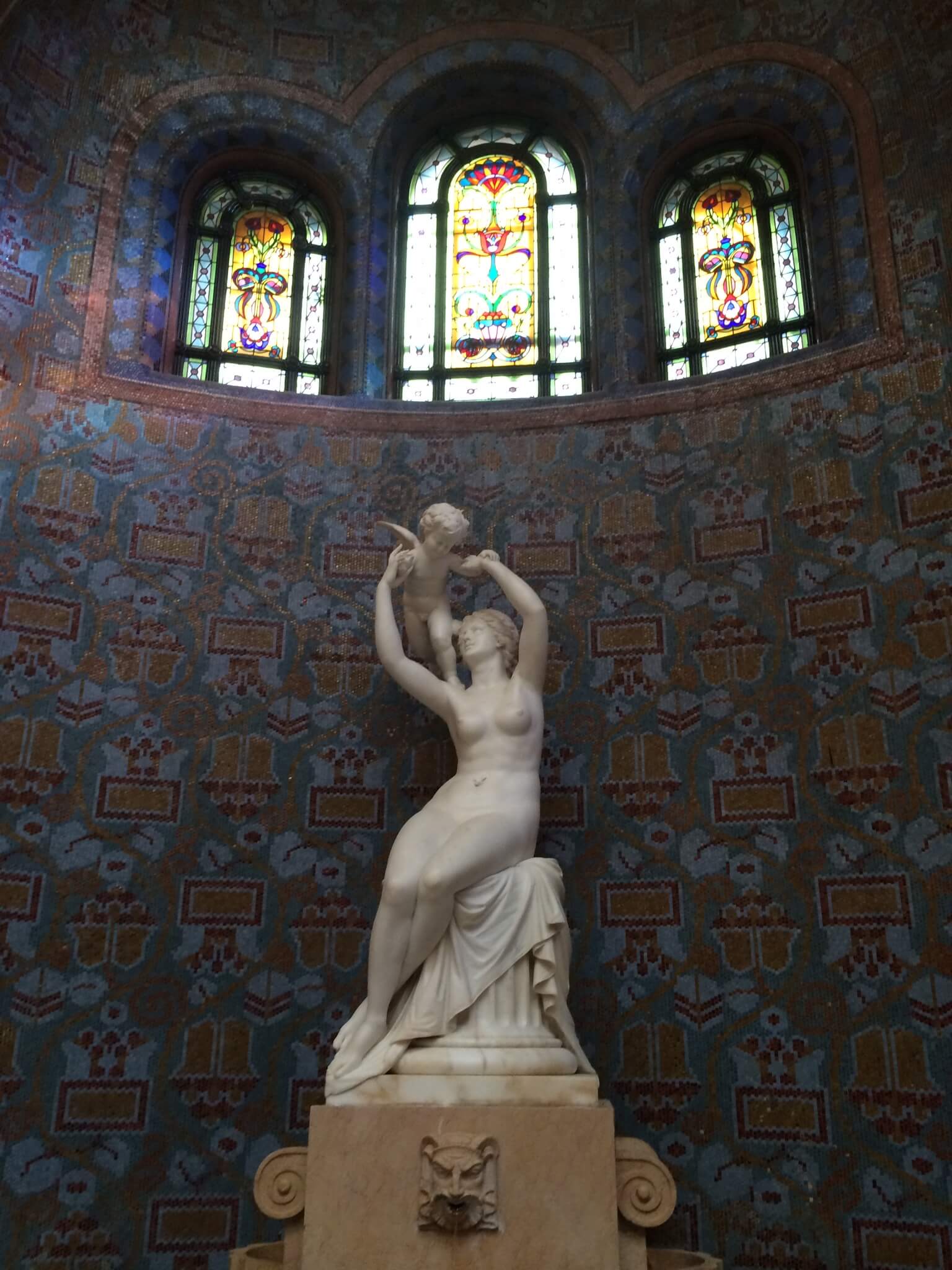The decision to visit Budapest, Hungary was nothing coming from the heart. I just couldn’t remember of ever having been at Hungary. And it was easily reachable by train – using the Keleti pályaudvar / railway station. Everybody seems to have been in Budapest already. It is quite touristic and maybe famous as a place for lovers. I was unsure whether this was a good choice.
Continue reading “A visit to cloudy Budapest”Refreshing at the Gellért spa
What is not obvious while walking through Budapest, Hungary is the fact, that it is a spa town. There are over 100 thermal springs producing water with a temperature between 21 and 78 degrees celsius. Therefore one definitly needs to try one of the spas; the most famous being the Gellért spa and the Széchenyi spa. And after walking around so much in this town this is always a great idea.
Continue reading “Refreshing at the Gellért spa”Szabadság-szobor
The liberty statue (szabadság-szobor) is a memorial located on Gellért hill (Buda side) in Budapest, Hungary. It is a 14 meters high woman holding a palm leaf and it is honoring the soldiers that liberated the country during World War II. Together with the resting place made of stone it is about 40 meters high and therefore visible from nearly every point of Budapest.
Continue reading “Szabadság-szobor”Stalins boots & Lenins exile
What to do if times change, political systems drown and the streets are still filled with statues that don’t seem to fit anymore? In some countries these stone and steel giants have been destroyed, in Berlin the head of Lenin has been buried underground in a wood. In Hungary they decided to show these icons – in a place called Memento Park, close to Budapest.
Continue reading “Stalins boots & Lenins exile”Hungarian National Gallery
If you climb up the hills on the Buda side of Budapest, Hungary – maybe close to the Fisherman’s Bastion – you can walk for hours having wonderful views on the city. Following the trail to the south you’ll reach the palace (Budavári palota); the biggest building in Hungary. It dates back to the 13. century and king Béla IV.
Continue reading “Hungarian National Gallery”The most beautiful parliament
The parliament of Hungary (Országház) is a wonderful building in gothic revival style standing directly at the Danube river. Its beauty is a large contrast to the sometimes inhumane politics made there. It has been built from 1885 on and the design has been inspired by the British parliament in London. The architekt Imre Steindl was unluckily never able to see his work finished, because he went blind before the work was done.
Continue reading “The most beautiful parliament”Szent István-bazilika
The St. Stephen’s Basilica is a roman-catholic church in the heart of Budapest, Hungary. It is close to the vivid Erzsébet tér and the chain bridge (Széchenyi lánchíd). It dates back to the year 1905 and is the biggest church of Budapest. 8500 worshippers can find a place here and the dimensions of the building can only partially be seen.
Continue reading “Szent István-bazilika”Fisherman’s Bastion
High above the Danube, at the heart of Budapest (Hungary): the Halászbástya (Fisherman’s Bastion) is a wonderful neo-Gothic monument, located where once the fish market of Buda was. The white walls and towers were part of the city walls of Budapest, this segment protected by the fishermen. It is close to the St. Matthew church and you’ve got an awesome view on the city from here.
Continue reading “Fisherman’s Bastion”Dohány Street Synagogue
The Great Synagogue of Budapest, Hungary has been built from 1854 on by an architect from Vienna. It is located in Pest close to the city center, not far away from Erzsébet tér. It has been built in Moorish style and looks a bit like the Alhambra in Granada, Spain.
Continue reading “Dohány Street Synagogue”The Heroes’ Square
An important place in the centre of Budapest, Hungary, where you can learn one thing very good: how little you know about Hungarian history. Béla IV? Coloman? Ladislaus I? Imre Thököly? Lajos Kossuth? István Bocskay? Does this ring a bell? No? Don’t worry – somehow the stories of Eastern Europe have been hidden behind the Iron Curtain.
Continue reading “The Heroes’ Square”









